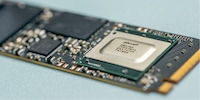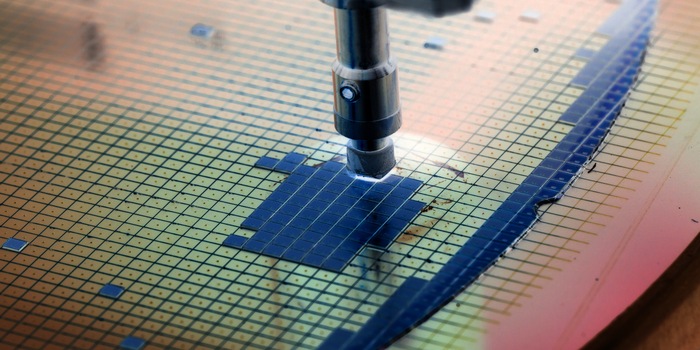
Background information
SSD parts: the semiconductor crisis is leading to some creative solutions
by Kevin Hofer

Great, now this: TSMC, the world’s largest contract semiconductor manufacturer, is reportedly raising its prices. Likely in order to make many electronic products more expensive. But this is just the latest blow in an all-consuming semiconductor crisis that has been going on for more than a year now.
The semiconductor crisis: I can’t stand it anymore. For more than a year, my least favourite topic has been circulating through the media. The latest headline: TSMC is apparently raising their prices by up to 10 per cent for high-end chips with 7- or 5-nanometre technology. In the case of production structures around 16 nm upwards, the increase was as much as 20 per cent.
This will have a big impact on anything that has a chip installed. TSMC manufactures products for Apple and AMD, among others. It’s completely obvious that these producers will pass the price increase on to customers. I would.
Whether it’s your smartphone, digital billboard, car or headphones: semiconductors are built into all of these items. World Semiconductor Trade Statistics (WSTS) predicted the semiconductor market to grow by about 25 per cent in 2021.
Demand for semiconductors has far exceeded supply for more than a year. How could this happen?
First, one thing of note: Silicon wafers – plates on which the chips are manufactured – cannot be stockpiled. They have an expiration date. Therefore, they must be cast to order. Like a good risotto. It’s ready when it’s ready. As the Italians say: risotto doesn’t wait for guests, guests wait for risotto.
That’s exactly the problem. All over the world, manufacturers and suppliers are waiting for their risotto. Sorry, their silicon wafers. This is due to semiconductor manufacturers having to increase their orders from silicon foundries due to the rising demand for semiconductors. These foundries manufacture silicon wafers.
Regrettably, they’ve been unable to cope with the enormous demand for months. This already started before the Corona pandemic, when China closed foundries due to new environmental regulations. Affected plants hadn’t complied with new regulations.
In addition to these bottlenecks, there have also been supply issues since the beginning of 2020. These were triggered, among other things, by Covid and by geopolitical tensions between the USA and China. In short: trade restrictions and delays in deliveries made production more expensive and delayed it.
At the same time, Corona shook up the chip market. Due to the restrictions and lockdowns, demand for notebooks, PCs and the like increased more than expected. This trend is still continuing, as shown by the WSTS growth forecast.
The perfect storm of many, small causes.
When Covid started, demand for semiconductors could still be satisfied to a certain extent thanks to the automotive industry – a large consumer of semiconductors – initially cancelling or reducing pandemic orders. If no one’s buying any cars, manufacturers don’t need the chips. However, demand for cars picked up faster and more significantly than expected in the second half of 2020.
The perfect storm continued to brew.
Thus, the situation has only worsened. Car manufacturers such as VW still have to implement short-time work schedules today, even though orders are coming in. There’s simply a lack of chips to build more cars.
However, the semiconductor crisis doesn’t only affect large chips in cars or graphics cards. Meanwhile, smaller controllers on SSDs are also affected. These are manufactured in larger structure widths, exactly the area where TSMC is now increasing prices by up to 20 per cent.
Gaming graphics cards are a special case. They were affected by the semiconductor crisis earlier than other chips. In this case, cryptominers fuelled the shortage. These GPUs were an early indicator of what else was to come.
The perfect storm has made landfall.
Since the production of semiconductors cannot simply be ramped up like that, we will probably have to put up with the situation until at least the second quarter of 2022. TSMC is also working with this timeframe in mind. The company expects demand to decline in the coming months. Perhaps this is also connected with the price increase.
Graphics cards, for example, are now more readily available depending on the model, and you’ll find one in stock in our store from time to time. But that’s only due to astronomical prices: in most cases, they’ll run you over twice the recommended retail price (RRP).
With TSCM’s price increase, the situation will likely only worsen. How many people will then still go for these products is questionable. Who knows, maybe graphics cards and the like will become cheaper again due to decreasing demand fuelled by high prices. But even if demand declines again, it’ll be a while before this is reflected in the price.
The major semiconductor manufacturers Intel, Samsung and TSMC are planning to expand their production capacities and are investing heavily in new facilities. However, it’ll be several months or even years before they are operational.
From big data to big brother, Cyborgs to Sci-Fi. All aspects of technology and society fascinate me.
Interesting facts about products, behind-the-scenes looks at manufacturers and deep-dives on interesting people.
Show all